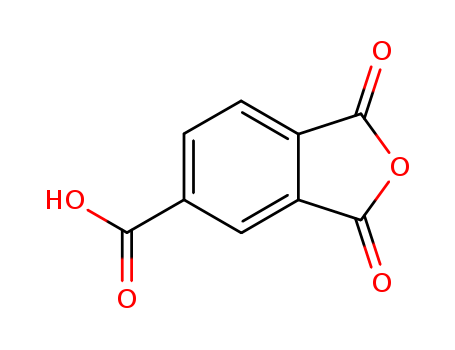- Product Details
Keywords
- Oxaliplatin
- 61825-94-3
- C8H14N2O4Pt
Quick Details
- ProName: Oxaliplatin
- CasNo: 61825-94-3
- Molecular Formula: C8H14N2O4Pt
- Appearance: white powder
- Application: antineoplastic
- DeliveryTime: within 3-7 day
- PackAge: As required
- Port: shanghai or other
- ProductionCapacity: 5 Metric Ton/Month
- Purity: 99%
- Storage: room temperature
- Transportation: by sea or by air
- LimitNum: 1 Kilogram
Superiority
Changzhou Xuanming Chemical Co., Ltd. is dedicated to the technology development, manufacturing, import and export chemicals, which are specialized in pharmaceutical intermediates, pesticide intermediate, industry of fine chemicals and custom synthesis. Now, we enjoy good reputation among customers and take favorable market share in domestic and at abroad.
Changzhou Xuanming Chemical CO., LTD is located in Northern Jiangshu Industry Park, we have modern manufacture bases and some laboratories, which can supply the key intermediate for your projects, and short your synthesis scheme and supply you a reference compound for bioassay or a high purity analytical standard. We have been abided by “treat technology as first, quality as basis, customers as God, and be honest and sincere”. It is our final aim to provide environmental and high technological products and meet customers’ requirements according to keep effors on developing new chemical fields.
Changzhou Xuanming Chemical CO., LTD promises to help you with heart and soul.


Details
| Oxaliplatin Basic information |
| Product Name: | Oxaliplatin |
| Synonyms: | oxalatoplatinum;oxaliplatino;Oxaliplatin99%;OxaliplatinEp5;(1R-trans)-1,2-Cyclohexanediamine, platinum complex;Dacplat;Eloxatin;Elplat |
| CAS: | 61825-94-3 |
| MF: | C8H14N2O4Pt |
| MW: | 397.29 |
| EINECS: | 621-248-1 |
| Product Categories: | Pharmaceutical material and intermeidates;Active Pharmaceutical Ingredients;-;Antineoplastic;Intermediates & Fine Chemicals;Pharmaceuticals;APIs;Amines;Heterocycles;chemical reaction,pharm,electronic,materials;PRAXILENE;Inhibitors |
| Mol File: | 61825-94-3.mol |
|
|
|
| Oxaliplatin Chemical Properties |
| alpha | +74.5-78.0 (D/20)(c=0.5,H2O) |
| storage temp. | Store at +4°C |
| solubility | Slightly soluble in water, very slightly soluble in methanol, practically insoluble in anhydrous ethanol. |
| form | solid |
| Water Solubility | Soluble in water with heating and/or sonication |
| Merck | 14,6912 |
| Stability: | Stable. Store cool. Incompatible with oxidizing agents. |
| InChIKey | ZROHGHOFXNOHSO-BNTLRKBRSA-L |
| CAS DataBase Reference | 61825-94-3 |
| Safety Information |
| Hazard Codes | Xn,Xi |
| Risk Statements | 36/37/38-40-42/43 |
| Safety Statements | 26-36 |
| RIDADR | 2811 |
| WGK Germany | 3 |
| RTECS | TP2275850 |
| HazardClass | 6.1(a) |
| PackingGroup | II |
| HS Code | 28439000 |
| Oxaliplatin Usage And Synthesis |
| Indications and Usage |
Oxaliplatin, also called Eloxatin or Eloxatine, is a platinum derivative. Used clinically to treat patients with metastatic colorectal cancer after failure of fluorouracil treatment, can be used alone or in combination with 5-fluorouracil. It is the third-generation platinum antitumor compound after cisplatin and carboplatin, and so far the only platinum-based drug with significant effectiveness against colorectal cancer. It also inhibits proliferation of ovarian cancer and melanoma cell lines. |
| Mechanisms of Action | Acts on DNA through production of alkylating conjugates, inhibiting its synthesis and reproduction by forming interchain and intrachain cross-links. |
| Adverse Effects |
|
| Description | Eloxatin was launched in France for second-line treatment of metastatic colorectal cancer. Oxaliplatin is a second generation platinum drug prepared in three steps from either k2tCl4 or K2Ptl4. It has an antitumor spectrum similar to cisplatin, however, it is more effective against L1210 leukemia and cisplatin resistant L1210. It is also effective against B16 melanoma but has a dose limiting toxicity of peripheral sensory neuropathy that is reversible upon cessation of the drug. The (R,R)- enantiomer has greater activity than the (S,S)-isomer but this is tumor line dependent, e.g., there was no difference found for P-388 or Sarcoma 180. Clinical drug administration based on circadium timing showed it was better tolerated when given 16 h after the onset of light. Oxaliplatin binds to guanineN7 and can lead to bidentate chelation that results in the bending of DNA. This feature is recognized by high mobility group proteins (HMG) which impedes repair reactions and stops replication and transcription. |
| Chemical Properties | White Crystalline Solid |
| Originator | Bebiopharm (Switzerland) |
| Uses | Third generation platinum complex. An antitumor agent with activity against colorectal cancer. Cytotoxicity follows the formation of adducts with DNA. Antineoplastic. |
| Uses | vasodilator |
| Uses | A potent anti-neoplastic agent that binds to DNA and shows efficacy in Cisplatin resistant cell lines |
| Uses | Oxaliplatin is a platinum-based antineoplastic agent that functions by forming DNA adducts specifically in cancer cells, preventing DNA replication and transcription which leads to cell death. Oxaliplatin has cytotoxic effects in a broad range of cell lines, including colon, ovarian, and lung cancer, with IC50 values ranging from 0.5-240, 0.12-19.8, and 2.6-6.1 μM, respectively. Through its general cytotoxic effects, oxaliplatin has anti-tumor activity against advanced colorectal cancer and is typically administered with fluorouracil and leucovorin in a combination known as FOLFOX. |
| Uses | A antitumor agent with activity against colorectal cancer. Cytotoxicity follows the formation of adducts with DNA |
| Brand name | Eloxatin (Sanofi Aventis). |
| General Description | Oxaliplatin is available in 50- and 100-mg vials for IV administrationin the treatment of ovarian cancer, metastaticcolorectal cancer, and early stage colon cancer in combinationwith 5-fluorouracil/leucovorin. The activation of theagent occurs in low-chloride environments to give theaquated species, which subsequently reacts with DNA in amanner similar to cisplatin. The mechanisms of resistance aresimilar for the two agents; however, oxaliplatin is not recognizedby MMR enzymes and does not show cross-resistancewith cisplatin. The agent is widely distributed, highly proteinbound (85%–88%), and irreversibly binds to erythrocytes.Numerous metabolites have been identified many of whichare produced as a result of nonenzymatic processes and includechloro-, dichloro-, monoaquo-, and diaquo-species.The parent and metabolites are eliminated primarily in theurine with a long terminal elimination half-life of 240 hours.Neurotoxicity is dose limiting and normally presents as peripheralneuropathy, which may be exacerbated by exposureto low temperatures. The neurotoxicity is normally reversiblein contrast to that seen with cisplatin, which may be irreversible.Other adverse effects include nausea, vomiting, diarrhea,myelosuppression, and hypersensitivity reactions.Ototoxicity and renal toxicity occur only rarely in contrast tocisplatin. |
| Biological Activity | Antitumor agent that forms platinum-DNA adducts. Causes intra- and interstrand DNA crosslinks blocking DNA replication and transcription. Displays higher cytotoxicity and lower nephrotoxicity than analog cisplatin (cis-Diaminodichloroplatinum ) and shows antitumor activity in cell lines with acquired cisplatin resistance. |










